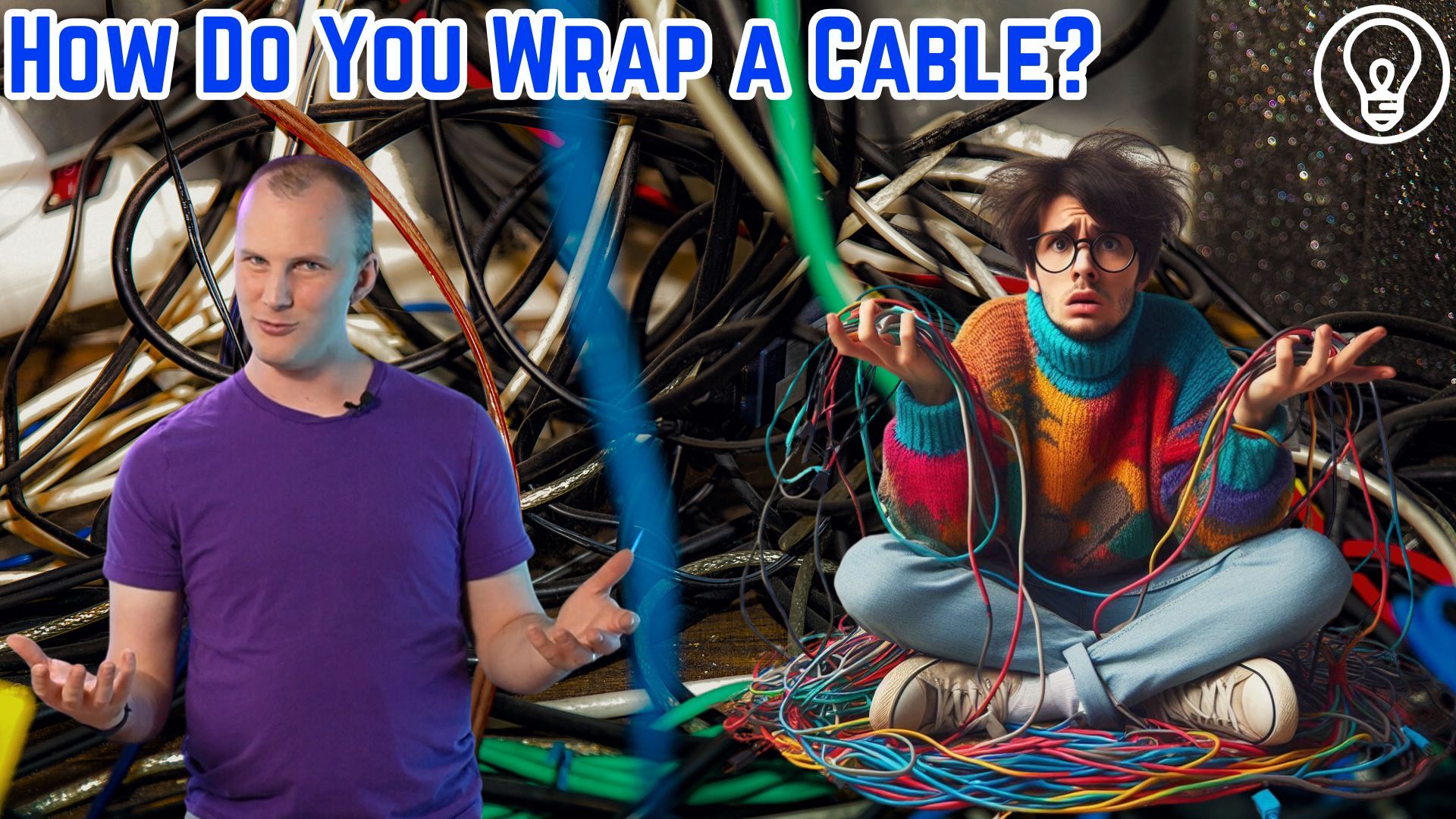
How to Wrap Cables Like a Pro: The Over-Under Method
Jan 02, 2025Wrapping cables can be a real pain. If you’ve been around this industry for any length of time, you know the time-saving convenience of a well-wrapped cable – and also how difficult that can be to achieve!
In this blog post, we'll show you the proper way to wrap cables using the over-under method. This method is the most popular and efficient way to wrap cables in stage lighting, audio, and video fields.
If you’re a visual learner, watch my video about this method here.
What is the Over-Under Method?
The over-under method is a simple way to wrap cables that mimics the way they are manufactured. When cables are made, they are wound onto a reel with a slight twist. The over-under method replicates this twist and also prevents tangles and knots.
With a correctly wrapped cable, you can easily walk along and drop cable or toss it out in a straight line with no trouble - no more twisted messes of cable on setup!

How to Wrap a Cable Using the Over-Under Method
-
Start by making a small loop with the cable (usually at the end without a cable tie), with about 3 feet of wire.
-
Measure out the same length again and bring the cable over the top of the loop. [screenshot]
-
Measure out the same length again but this time, bring the cable under itself before adding to the loop.
Another method for wrapping under - grab it from the other side.

- Continue wrapping the cable around the loop, alternating between over and under.
- Once you have wrapped the entire cable, secure it with a cable tie.
Troubleshooting Tangled Cables
The over-under method sometimes gets a bad rap when it looks like a cable is tangled up after using this method. Maybe it’s been stored for a while, or got jostled around in a box, and when you try to unroll it, there’s knots or tangled loops every few feet. This is not the fault of the over-under method!
It happens by inadvertently taking either end of the cable and passing it through the center of the loop to the other side. This can be easy to do if it isn’t properly stored or secured with a cable tie.
How do you fix a tangled cable?
-
Take the end of the cable and follow it down to the first loop/knot.
-
Guide the cable end through the knot itself, following the cable.
-
Go to the next loop, and again follow the cable through the knot with the end you’re holding.
-
Repeat until you’re through all the “knots”.
- Gently pull the cable end the rest of the way through, and you should have a smooth, straight cable ready to rewrap.
- Once you have removed the tangle, wrap the cable using the over-under method.
Fixing a Twisted Cable
When a cable has been wrapped wrong for a long time, you may end up with an unruly cable that’s a mess of twists and loops and cable going every which way. Here’s how to “reset” your cable:
- Lay the cable out as flat as you can get it on the floor.
- Start at the other end of the cable and start to slowly wrap it using the over-under method, leaving a short length at the beginning.
- You’ll see this starting cable end start to “spin” and twist around, as it works out the swirls and twists from the cable.

If you've got a cable that's really angry at you, like it's been wrapped wrong for a long time or it was wrapped wrong and exposed to cold temps, try putting it in a warm place for a while (like a parking lot on a hot day). This can make the rubber pliable so you’re able to rewrap it correctly.
Here are some additional tips for wrapping cables:
-
Make sure the cable is not twisted when you are wrapping it.
-
Wrap the cable evenly and tightly.
-
Use the right size cable tie. Cable ties that are too small will not be able to secure the cable properly, and cable ties that are too large will be difficult to work with. We sell a few different widths and lengths of high-quality ties here at Above AVL. Our cable ties use a rugged hook and loop fastener with a metal ring at the end that hold up better than plastic ones.
- Label your cables. This will make it easier to find the right cable when you need it.
- Store your cables in a safe and organized place. This will help prevent them from getting damaged or tangled.
Conclusion
Wrapping cables properly can save you a lot of time and frustration. By following the tips in this blog post, you can learn how to wrap cables like a pro.
HOW TO BEGIN WITH LIGHTING
Getting started with lighting is difficult. What tools do you need?
How do you know if what you're buying or using is the right solution?
Let me send you a FREE guide to help you begin with lighting:


